I remember being so concerned about teaching Tabitha how to read when she was little. I admit I pushed too hard at times. That said, she was reading by the time she was 2 1/2 and Amelia was reading by 3 1/2. Thankfully they weren't permanently scarred by my insistence on learning to read early. In fact, they both enjoy reading very much now. With the younger two children, I am a lot more laid back. Yes, part of it is because I have to focus so much on the older children, now that they have to be "official" with the school district. However, I have also seen that they tend to be picking things up just by participating with their older siblings. For instance, Hannah has been able to read words I did not expect her to be able to read yet, words she shouldn't be able to read if she had only been learning to read with the phonics we have used. All that to say, her reading skills are coming along nicely, but I felt there was something missing. So, I was thrilled when we were chosen to be on the review for Eclectic Foundations Language Arts Level B from Eclectic Foundations.
This program from Eclectic Foundations, written by Elizabeth Ratliff, is a well-rounded Language Arts program that is suitable for 1st or 2nd grade. There are lessons in reading (including comprehension), phonics, handwriting, poetry, and grammar. All of this is taught from a set of two books, one being the Teacher's Guide, the other the Student Workbook, in addition to Phonics Practice Sheets and Word Cards. One extra book that needs to be obtained is McGuffey's First Eclectic Reader: Revised Edition. We happened to have this book on our bookshelf, as I had purchased it as part of a set several years ago, when I was still trying to figure out what curriculum we were going to use. The set had not gotten much use, so I was excited to be able to use it with Eclectic Foundations. That said, they did send us a spiral bound printed copy of the free PDF file that is linked to on their site. This printed copy is not normally included, and you would have to print it out yourself. The McGuffey reader is a necessity as the reading portion, comprehension, and grammar are based around it.
This program is meant to take a full school year to complete. There are 144 lessons, and it is meant to be taught four days a week, one lesson a day. Which fits perfectly with our schedule, as we have four full days of school plus a co-op day each week.
The spiral-bound Teacher's Guide lays out each of these 144 lessons, one lesson per page.
Each lesson consists of the five subjects mentioned above, and is easily followed. This isn't scripted word-for-word, but is written in a way that directs the parent/teacher well. There are discussion questions for the reading, and comprehension questions for the poetry. The author helps direct the parent on what needs to be done for the other sections. Sometimes there are even directions for a craft project.
The spiral-bound Student Workbook is the thickest of the books. These pages focus on the phonics word lists that the student is to read, plus the handwriting and poetry. At the beginning of the book, there will be occasional grammar lessons as well, and it appears there are a greater number of grammar lessons as the program progresses. So far, most of our grammar lessons have been able to be done on the easel and orally. The font used for the lessons is all larger font for ease of reading by younger children.
The Phonics Practice Sheets are 17 laminated, spiral-bound pages which allow the children to use a dry erase marker to practice writing their phonics words. So far we have used Practice Sheets A-D. Practice sheet A allows room for children to write CVC words, with blank lines for the first and last letters, and the vowels typed out in the middle. Phonics sheet B adds the e at the end of long vowel words. Phonics sheet C has a combination of the short and long vowel words, plus additional lines for plural words. And Phonics sheet D has the child draw a line from a letter in the first column of letters, to the vowel in the center column, and finally to the two letters in the last column to create a word, such as "back," "bell," or "less."
Here Hannah is using Phonics Practice Sheet B:
The Word Cards are printed on card stock and come packed in a plastic bag. I chose to keep them in the bag, cutting them apart prior to the lesson they would be used in. These Word Cards are used during the reading/McGuffey portion of the lesson, on alternate days. The first day of each McGuffey lesson, we read the story and discuss it, write a story, and draw a picture. On the second day we work on the Word Cards, which are new words introduced in the story. It is with these cards that Hannah is learning parts of speech. She is to color the words a specific color, depending upon what part of speech it is. The instructions direct us to store them in a recipe box, separating them by rubber bands. I found a different way that works for us. I have labeled individual envelopes with the part of speech, underlining it in the designated color. After Hannah finishes coloring them, she puts them in the correct envelope and then we store all the envelopes in a larger envelope.
We complete the lesson in the order that it is written in the Teacher Guide. Each day we start with our McGuffey time. The reading passages start out quite simply, using simpler words than what the student is to know how to read in the phonics section. At first this seemed a little odd, until I realized that the reading passages are more for discussion and comprehension, while the phonics word lists are separate. Hannah has really enjoyed looking at the pictures in the reader and telling her own version of what is happening. She gets to use her imagination, and we work on sentence structure, then she gets to draw.
We then move on to the phonics word lists. Hannah reads the words, and I make sure she is saying them clearly and fluently. Then I choose some of the words for her to write on the practice sheets. I give her random words, making sure to have one word that uses each vowel, making sure she writes them on the correct line.
We then move back to the Student Workbook for Handwriting practice. She is really enjoying learning how to write in cursive. Right now we are working our way through the alphabet. Once we finish the alphabet, there will be passages to write. I haven't quite been following the directions for the cursive portion. When I was reading the initial directions, I actually missed the part that said the student was to write an unbroken chain of the letter on the line. So, I have been writing the letter, having her repeat it, then writing it again, and having her repeat it again, until she has written it to my satisfaction. I don't have her write too many though, as she does get frustrated if she has to do too many of the same letter at a time. I have actually been having her write simple words, starting when we were on the letter "b." I had her write "Bab," and then when we got to "c" she wrote "cab." Each new letter has given me a wider selection of words to choose from for her of course. I wanted to make sure she was learning to join her letters right from the start.
As she writes the letters, I guide her by stating the different strokes she needs to make. I stay right beside her for this portion of the lesson, because I want to be aware of where she might be struggling, and address it immediately.
When she is done with her handwriting, we move into the poetry section. She reads the assigned stanzas, and I will help her with any unfamiliar words. Then she is to circle the rhyming words. Each different set is circled with a different color, so she can see which words rhyme with which. These lessons have been challenging for her, as she has trouble hearing the ending sounds, but she is loving doing them. After all the rhymes are found she answers the comprehension questions.
We conclude our Language Arts time with the grammar section. Sometimes the older girls are sitting at the table and I will have them join in. The book starts by making sure that the child knows that the letters are called letters, knows what order they go in, and that they represent sounds. We then start to discuss nouns, getting into common, proper, singular, and plural nouns. This is followed by learning about different types of sentences. Later on in the program Hannah will be learning about such things as commas, abbreviations, contractions, other punctuation symbols and much more.
Hannah has really been enjoying her lessons. In fact, I overheard her one day state, "I don't like it, I LOVE it!" She is so excited to be learning how to write in cursive. And she loves being able to look at the pictures in the reader to come up with her own story.
I love how easy it is to use this curriculum. Everything I need to teach is right there on the page. There aren't a lot of components, and everything works well together. I will say, along with accidently changing up the cursive lessons, I also purposefully added the joiner stroke at the beginning of the lower case letters so she would know the proper way to form the beginning of the letter. The way the book illustrates each letter, is as if it has already been joined to the previous letter. Which didn't quite make sense to me, as this was her first exposure to cursive.
One other thing I wanted to mention. Though we haven't gotten past learning the individual letters in cursive yet, I have looked ahead to see what the copywork will be like in future lessons. I was surprised to see that the passage is given in print or manuscript letters, and yet the student is required to write it in cursive. To me, copy work means the child is supposed to copy what is written. So, I will be writing the passages out in cursive for her to copy.
Other than those concerns, I have found Eclectic Foundations Language Arts Level B to be a well-rounded program. In order to be ready for Level B, a child does need to know the letters and be able to read simple CVC words.
You can find Eclectic Foundations on Facebook.
Don't forget to check out the reviews of my fellow Crew Mates. Besides Level B, Eclectic Foundations also has a Level A and a Level C, and will be adding Level D later this year.





















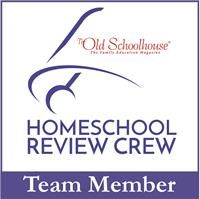
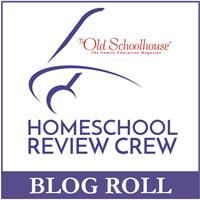














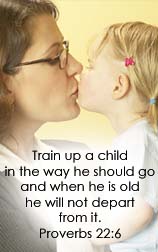



![[PREMIO2009.png]](https://blogger.googleusercontent.com/img/b/R29vZ2xl/AVvXsEjXD_Gx-wZ9EM5hXKrEYLksEBkYfRQtmb8VDVTDG_yyLggQoFIstZsh4zszdG20KqErZicRzEhiNYLty7j3IMXJYsABqkXjr8pp-ncj71xCbpxlXGbGpZq2fTuDQqq1RMKV4DPcDBnBViA/s1600/PREMIO2009.png)
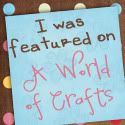
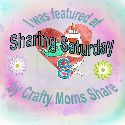


Isn't it wonderful to find something that really clicks with your child? My daughter is just a bit older than yours but needed something to help her with with her weak reading skills. I'm impressed with Eclectic Foundations. Thank you for sharing your experience with us!
ReplyDelete